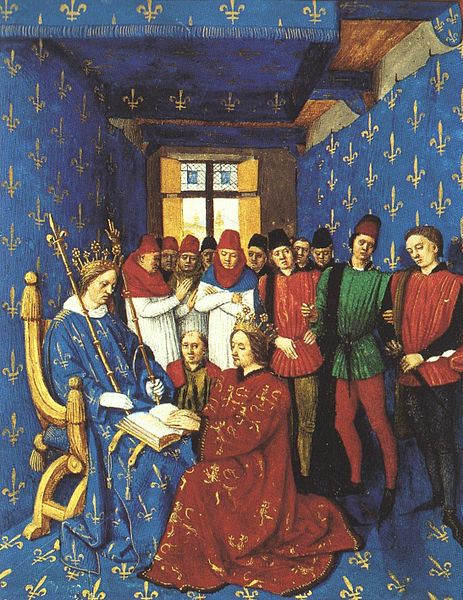 |
| Edward I receiving homage; Lord Borchard de Herle is on the far right |
In Cornwall on 17 June, 1268, Borin and Helena de Herle had a son, Borchard. He had a difficult youth: there is a claim that his father was abusive to his sons; typhoid fever killed his father when Borchard was 12, and crippled his mother; at 17 he killed his brother (Leofric, who was 16) in a duel over their inheritance. At 18, Borchard left home to study law at Cambridge. The university education made him attractive to the crown, and at the age of 20 he became a diplomat under Edward I.
The role of a diplomat then was much the same as now: to represent your country in difficult dealings with other countries. He was sufficiently active in France that a book on the 13th century in France features him heavily. Closer to home, however, he made a political mis-step that would cost him his head.
In the century of Borchard's birth, conflicts between Scotland and England were numerous. Many wealthy Englishmen became landowners in Scotland, and treated the local Scottish workers poorly. Revolts of Scottish workers were common, and to one such revolt—in which English were taken hostage by the Scots—Borchard was sent to settle things. Arriving on 17 February, 1305, with authority to use force to end the problem, Borchard decided to take a different approach.
He negotiated with the captors to release the English hostages. Unfortunately for him, something motivated him to go further. He helped the Scottish peasants plan another rebellion that would result in the death of 10 English landowners; it was staged to look like they had gone against Borchard's advice and absolve him of responsibility.
Why did he do it? Did he promise them something else, like victory over the English in exchange for rewards to Borchard? Did they offer him some of the land? Did he "snap" because of an abusive father? We cannot know.
Returning to England on 29 March, his fortunes quickly went downhill. Another member of the diplomatic mission, Henry de Bohun, reported Borchard's suspicious behavior to the king. These suspicions, and the second rebellion and deaths of Englishmen, gave Edward cause to declare Borchard a traitor. He was beheaded shortly after his return.


